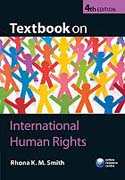
Global in coverage, the fourth edition of Textbook on International Human Rights provides a concise introduction for newcomers to the subject. Beginning with a brief analysis of the development of international human rights and the history of the subject, the text gives full consideration to the work of the UNbefore turning in more detail to regional systems of human rights. The secondhalf of the book looks at a variety of substantive rights, with illustrationsfrom both regional and international law. The strength of the book lies in its clarity and broad scope, with the focus on making the subject easily accessible to those with little or no prior knowledge. The author guides students through the complexities of each topic before providing a wealth of useful references at the end of each chapter. The fourth edition incorporates all the latest developments in the subject. Textbook on International Human Rights continues to be relied upon by students worldwide as the first book to turn to forclear and accurate coverage. INDICE: 1.: Introduction 2.: Historical background 3.: The United Nations 4.: The International Bill of Human Rights 5.: The United Nations organizational structure 6.: Regional protection of human rights 7.: Europe 8.: The Organization of African States 9.: The African Union 10.: Monitoring, implementing and enforcing human rights 11.: Substantive rights - general comments 12.: Equality and non-discrimination 13.: The right to life 14.: Freedom from torture, cruel, inhuman and degrading treatment or punishment 15.: The right to libertyof person 16.: Equality before the law - the right to a fair trial 17.: The right to self-determination 18.: Freedom of expertise 19.: The right to work 20.: The right to education and human rights education 21.: Minority rights 22.:Group rights 23.: Looking to the future
- ISBN: 978-0-19-956118-6
- Editorial: Oxford University
- Encuadernacion: Rústica
- Páginas: 440
- Fecha Publicación: 12/11/2009
- Nº Volúmenes: 1
- Idioma: Inglés
